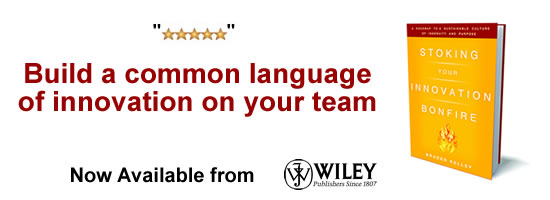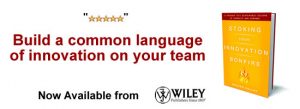13 Guidelines for Navigating the New Decade Ahead

In 2009, after a speech at the St. Petersburg International Economic Summit (Russia’s Davos), I wandered into a panel discussion on the topic of trade wars, led by New York Times columnist Thomas Friedman. My thought was: “why this topic?†Trade wars were not on most people’s radar, certainly not mine.
But the question is: should they have been?
I’ve been ruminating of late about this notion of one’s “radar†in relation to the world of rapid change that we are living in. Looking back at three decades advising companies on innovation strategy, I’ve noticed how little progress has been made in the field of strategic forecasting. Looking ahead at the 2020s, I see a dire need to reinvent the process by which we get to the future first.
In this next decade, businesses and their leaders will rise or fall based on their ability to anticipate and creatively respond to rapid change. That said, how exactly does one “anticipate and creatively respond” to change in an era when so much of what is happening –from the onset of the Global Financial Crisis to the rise of Donald Trump to the outbreak of a trade war with China — seems unpredictable.
Predicting the future will always remain problematic, even with the coming of prediction algorithms. But guidelines in this realm to help us navigate this new and turbulent world of hyper-change are due for improvement. Here are 13 that you may want to consider:
1. Create your own early warning system. Don’t expect others to spot trends, or to recognize threats and opportunities for you. Instead, we must all get better at looking, thinking and acting ahead of the curve. I call this process managing the future, as it combines the tools of technology scouting, forward thinking, competitive intelligence, strategic thinking, and scenario planning.
2. Think like a futurist. Economists primarily track one type of trend: economic. Futurists by contrast attempt to systematically explore predictions and possibilities about the future and how they can emerge from the present. Learn all you can from economists and other specialized experts. But expand your range over the entire landscape of driving forces of change and mega-trends: workplace, demographic, social, regulatory, environmental, geopolitical and technological. Develop insights into each important trend and add insights as you go.
3. Audit your information diet. Read voraciously and widely, and audit your information intake periodically. Move from passively “getting informed” to actively “being informed.†Pay greater attention to the external environment, and to events seemingly on the periphery. When you walk through an airport, ask questions of yourself. Scan the magazine racks for trends and cover story trends. Eavesdrop on the conversations around you. What’s the buzz? When you’re on social media, or sorting through junk mail, look for what’s new, what’s incongruous, exciting to you.
4. Connect the dots. Former Disney futurist Yvette Montero Salvatico uses the analogy of the night sky. As you look up into the night sky, Salvatico advises us to think of the stars as trends. As you look further, you begin to notice constellations as patterns: Ursa Major (the Big Dipper), Aries, Taurus, Gemini, Cancer, etc. To manage the future proactively, ponder how the trends interrelate, and focus on recognizing patterns. How you “connect the dots,†and make connections between bits of information requires that you hit “refresh” and maintain an open mind as you consume information. Challenge your own assumptions about where emerging trends are headed, and the implications broadly, and on how you and your organization might best respond.
5. Turn emerging trends into new solutions and adaptations. When Jeff Immelt was fired from his CEO position at General Electric, one criticism was that he “chased trends.” No question, trends can become “bright shiny objects” that some pursue without due diligence. But in today’s world, speed of observation of a trend or development (or threat) and translating that into responsive actions is the often the source of competitive advantage. Innovation means seizing the opportunities that change reveals, taking calculated risks, and translating hindsight, insight and foresight into strategic action. “The best way to predict the future is to invent the future.â€
6. Every action you take today shapes the future tomorrow. We must be purposeful in realizing that our individual actions – and time perceptions – create the future. This “spot a change, create a response†mindset will become the touchstone of innovation for the vast majority of businesses, regardless of industry in this new decade. It will affect businesses and individuals over the coming decade.
7. Study companies that “didn’t see it coming,†and were blindsided. The grocery industry “didn’t see it coming†when Amazon jumped into its business with the purchase of Whole Foods, destroying 22 billion in market value overnight. Merced Property and Casualty, an insurance company in Northern California, didn’t see the impacts of climate change coming, when a raging wildfire wiped out 22,000 structures and the entire town of Paradise, California. Unable to pay millions in claims, Merced became insolvent as a result. Or the textbook publisher in Boston who was running a $200 million business unit, when over a three-year period, sales begin to plummet. He, along with thousands of others, were put out of work. Reverse engineer in order to learn from other’s experience, and endeavor to not only “see it coming†but to take responsive action.
8. Practice getting better at predicting. There’s an old Danish Proverb that says, “Predictions are hard, especially about the future.†But not always impossible. Example: I predict that in 10 years you’ll be ten years older. So will millions of other people your age. Demographic trends – ages and life stages — and certain other trends can not only be predicted but projected farther into the future with great accuracy as to what you need to do to be prepared, and to capitalize on trends. The aging of baby boomers means that within just a couple decades, older people are projected to outnumber children for the first time in U.S. history. By 2035, there will be 78 million people 65 years and older compared to 76 million under the age of 18.
9. Look back in order to look farther ahead. On a recent visit to Morocco, I and my fellow travelers learned that the oldest homo sapiens fossil remains are 300,000 years old.  This is 100,000 years older than previously believed! Look back to look ahead. Contemplate the future as it appeared to people 30, 300 and 3000 years ago. Read history and biography and talk to wise persons in their 80s and 90s to see into the past more clearly. Looking back makes it easier to look ahead because you have a better sense of what are fads and what are more deep-seated trends. As Churchill put it, “the further backwards you can look, the farther forward you can see.â€
10. Dream big. Think big. Contemplating where you want to go and how you intend to get there is time well spent. In fact, it is a hallmark of every successful individual. The power of prospection is what makes us able and willing to look into the future, consciously and unconsciously, and is a central distinguishing trait of us humanoids. Yet modern life crimps our “dream space” and ability to imagine. Set goals and embrace your boldest dreams.
11. Beware the backlash. If a trend or development cannot continue indefinitely in a particular direction, it will reverse course at some point. Sometimes jarringly. The term for this phenomenon is “backlash,†meaning a strong and adverse reaction by a large number of people, to a social or political or technological development. Look for the backlash effect to occur frequently over the next decade, and not just in the arena of politics.
12. Identify cycles in history, in nature, in lives lived. To contemplate cycles — whether economic cycles, business cycles, geological cycles, or monthly cycles (to name only a few) is to literally think ahead of the curve in terms of where this cycle should head next. As talk of an impending economic downturn takes hold in the business world, executives can take thoughtful and proactive steps to help their companies better weather the storm.
13. Disrupt yourself. Disrupting yourself means asking tough questions. If you were attacking you, how would you go about it? To disrupt yourself, break down the essence of your personal value proposition. What’s unique about that value? And most importantly, how are you using your insights into the trends, to add value and differentiate “You, Incorporated.”
The biggest challenge over the next ten years will not be “the future,†but how you navigate your future, and the steps you take to remain relevant.
Wait! Before you go…
Choose how you want the latest innovation content delivered to you:
- Daily — RSS Feed — Email — Twitter — Facebook — Linkedin Today
- Weekly — Email Newsletter — Free Magazine — Linkedin Group
 Robert B. Tucker is one of the most in-demand innovation speakers and workshop leaders in the world today. A former adjunct professor at UCLA, Tucker is president of The Innovation Resource, a consulting firm specializing in helping leaders and their organizations invent higher growth futures. The author of seven books, his international bestseller Driving Growth Through Innovation: How Leading Firms are Transforming Their Futures was translated into 17 languages. As a thought leader in the growing Innovation Movement, Tucker is a frequent contributor to publications such as the Journal of Business Strategy, Harvard Management Update, Strategy & Leadership, and Innovation Excellence. He has appeared on PBS, Bloomberg, CBS News, and was a featured expert on the CNBC series The Business of Innovation, hosted by Maria Bartiromo. Details: www.innovationresource.com or contact (805) 682-1012.
Robert B. Tucker is one of the most in-demand innovation speakers and workshop leaders in the world today. A former adjunct professor at UCLA, Tucker is president of The Innovation Resource, a consulting firm specializing in helping leaders and their organizations invent higher growth futures. The author of seven books, his international bestseller Driving Growth Through Innovation: How Leading Firms are Transforming Their Futures was translated into 17 languages. As a thought leader in the growing Innovation Movement, Tucker is a frequent contributor to publications such as the Journal of Business Strategy, Harvard Management Update, Strategy & Leadership, and Innovation Excellence. He has appeared on PBS, Bloomberg, CBS News, and was a featured expert on the CNBC series The Business of Innovation, hosted by Maria Bartiromo. Details: www.innovationresource.com or contact (805) 682-1012.
NEVER MISS ANOTHER NEWSLETTER!
LATEST BLOGS
Starbucks and Big Tobacco
Back in the 1950’s smoking was glamorous, and just about everybody who was anybody smoked cigarettes. Then came the discovery, to the shock of millions, that sucking smoke into your lungs might not be good for you. Then came another revelation that one of the substances in tobacco, nicotine, which was used as a poison by the Egyptians during the times of the Great Pyramids, is addictive. People then began a mass exodus from the consumption of nicotine via inhaled smoke.
Read MoreWal-Mart Goes Green – What about your company?
With the price of gas above $3.00, some companies (and hopefully all) are beginning to look at the fuel efficiency of their fleets. Wal-Mart is the most public example of this with its trucking fleet. Its efforts include:
Read More



